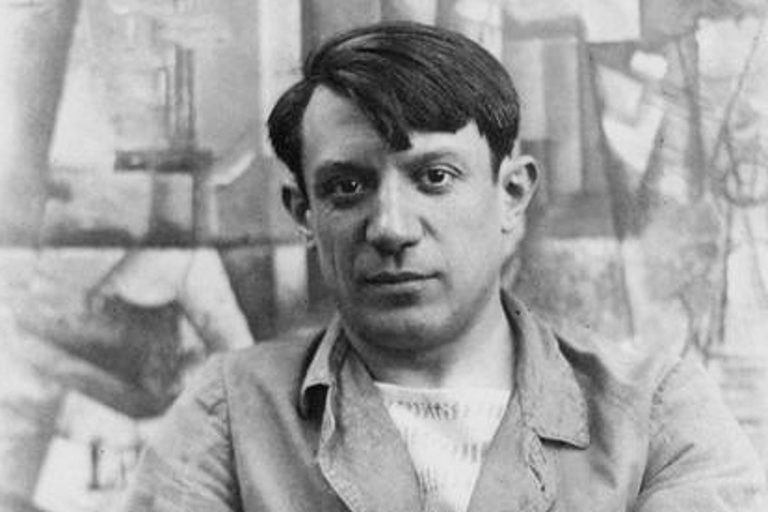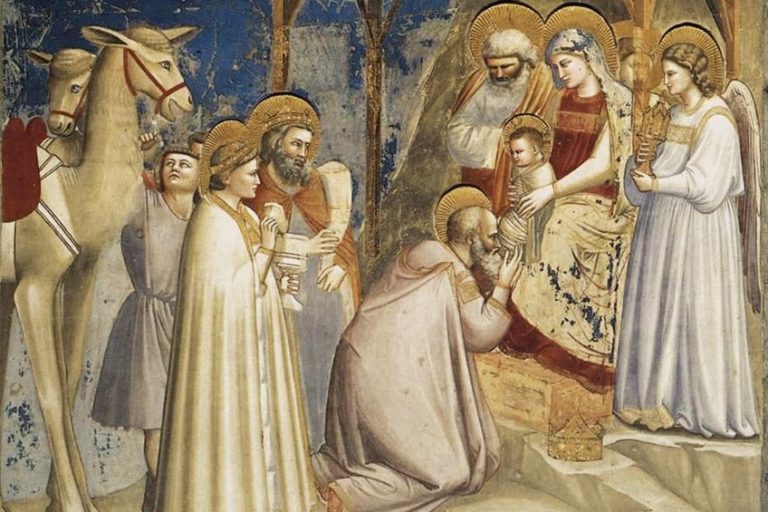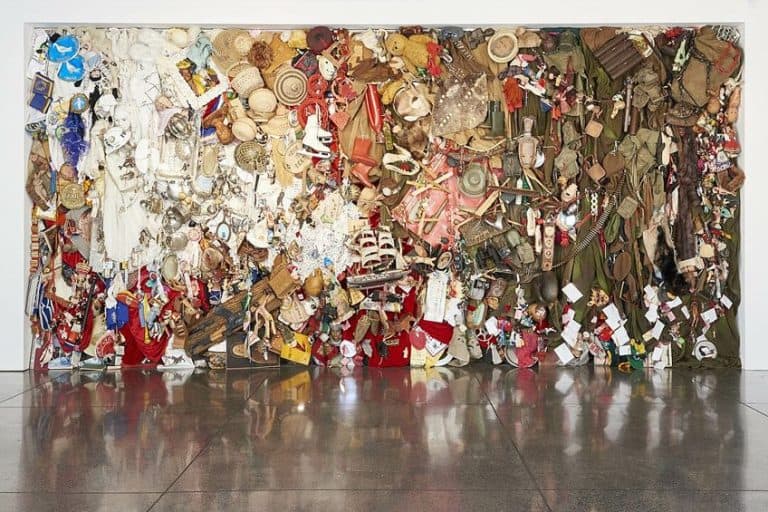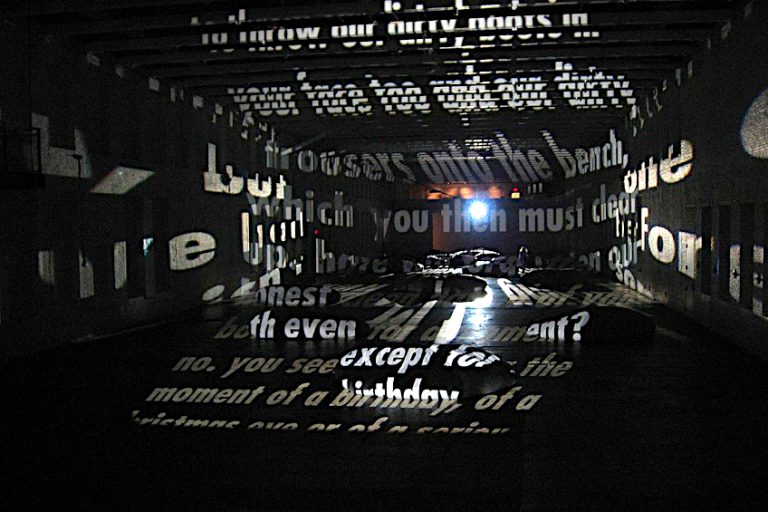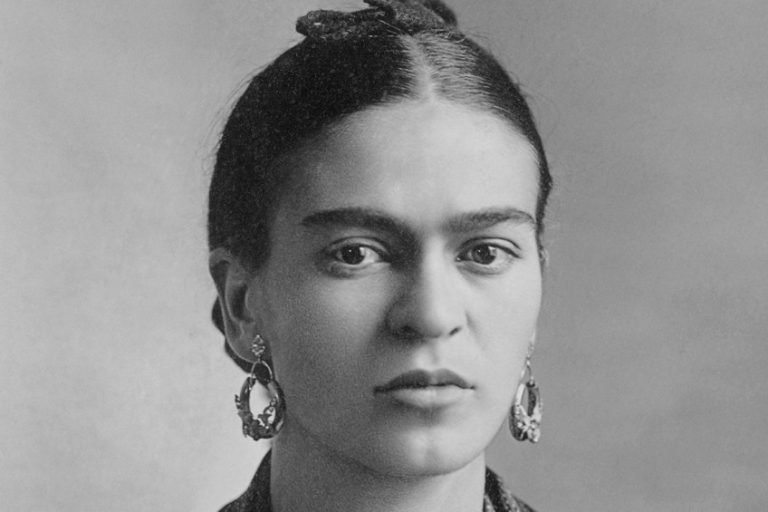Bruce Nauman – A Master in the World of Contemporary Art
Bruce Nauman, a pioneering figure in contemporary art, has left an indelible mark on the art world with his multidisciplinary approach and thought-provoking works. Born in 1941 in Fort Wayne, Indiana, Nauman’s career spans over five decades, during which he has continually challenged artistic norms and expanded the boundaries of what art can be. His diverse body of work encompasses sculpture, video, performance, installation, and neon art, often exploring themes of language, identity, surveillance, and the human condition. Nauman’s groundbreaking contributions have earned him international acclaim, establishing him as a pivotal figure in conceptual and multimedia art movements.
Table of Contents
Key Takeaways
- Bruce Nauman is a pivotal figure in contemporary art, consistently pushing its boundaries.
- His artistic practice encompasses a range of media and styles, often involving an element of performance.
- Nauman’s impact on the art world is evident through prestigious exhibitions and his enduring influence on new generations of artists.
Early Life and Education
| Birth | December 6, 1941 |
| Death | Present |
| Place of Birth | Fort Wayne, Indiana, United States |
| Genre of Work | Sculpture, performance art, and video art |
Bruce Nauman is an American artist renowned for his versatile and provocative works that have challenged and expanded the boundaries of contemporary art. Born on December 6, 1941, Nauman’s career has traversed a wide array of media such as sculpture, photography, neon, video, drawing, printmaking, and performance. His work is characterized by a deep exploration of language, the body, and large-scale participatory installations, making him a pivotal figure in Conceptual and Performance art.
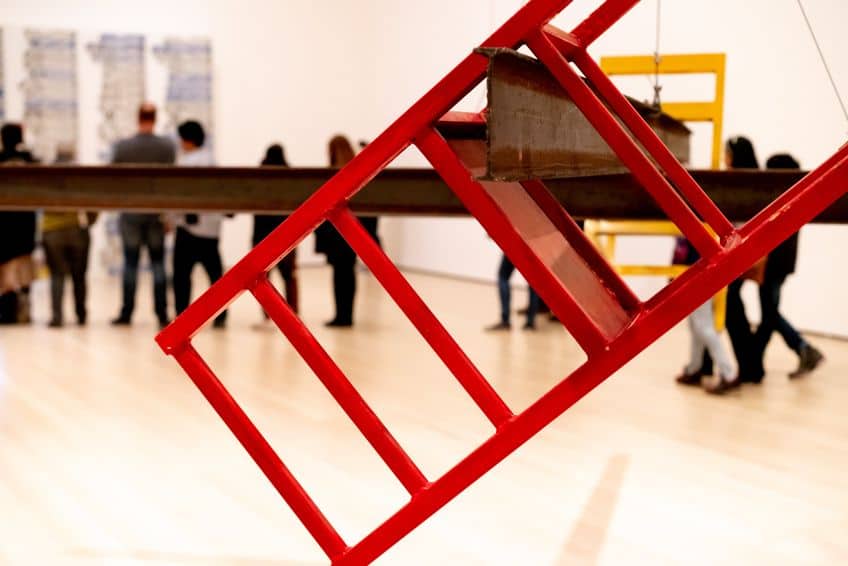
Throughout his prolific career, Nauman has continually reinvented his approach, questioning the essence of art and the role of the artist with a combination of intellectual rigor and irreverent humor. His notable works have gained international recognition, securing his position as an artist who has consistently reflected on the human condition.
Exhibitions of his work at prominent institutions like the Museum of Modern Art (MoMA) and widespread critical acclaim have cemented his status as one of the influential living artists.
University Years
Bruce Nauman attended the University of Wisconsin, Madison, where he received his Bachelor of Arts degree in 1964. His time at the university marked the beginning of his journey in the arts, although his initial focus was on mathematics. His interest gradually shifted towards art, leading him to take art classes and eventually changing his major. After completing his undergraduate studies, Nauman progressed to graduate school at the University of California, Davis for his Master of Fine Arts, which he attained in 1966. UC Davis was a hub for experimental and innovative approaches to art, and during his time there, Nauman was influenced by professors such as William T. Wiley and studied alongside other emerging artists.
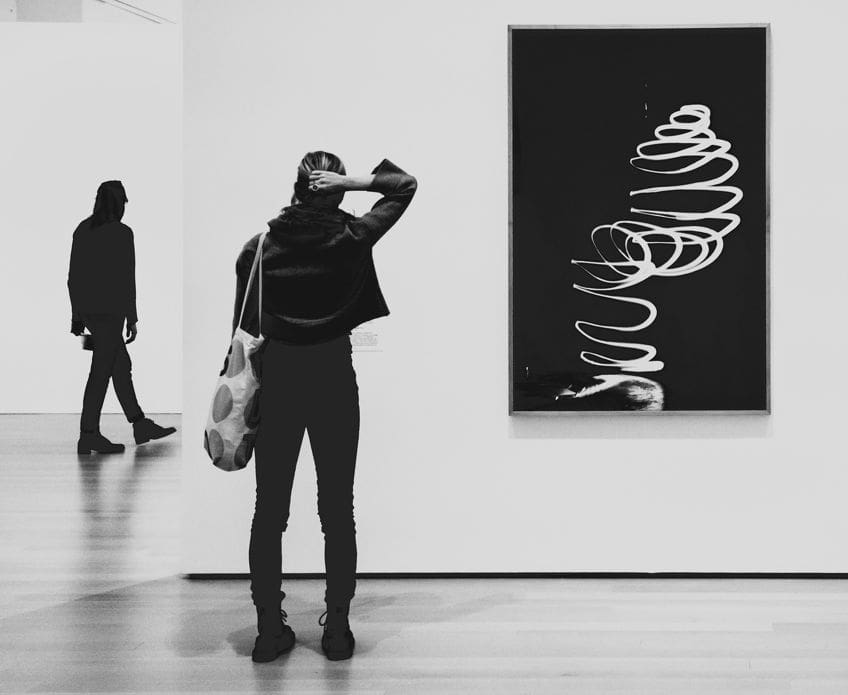
Current Period
His influential work continues to be studied and his methodologies taught in artistic curriculums, such as those at the San Francisco Art Institute.
His legacy in art education is intertwined with the broader history of conceptual and performance art, as well as his contributions to these fields through his innovative practices and explorations.
Artistic Style and Media
Bruce Nauman’s artistic style is often characterized by an innovative use of various media and an experimental approach that pushes the boundaries of conventional art categories. His work often includes sculpture, neon, video, and performance, reflecting his status as a leading American artist in Post-Minimalism and Conceptual art.

Experimentation With Neon
Nauman’s engagement with neon as a medium began in the 1960s, marking a pivotal shift in his artistic process. Through the use of neon tubing, he investigates the interplay of language, signs, and body, crafting messages that are both visually arresting and conceptually rich.
Some of his notable neon works create a stark contrast between the medium’s commercial connotations and the profound questions they pose about human existence and communication.
Video Art Exploration
Nauman’s video works are seminal in the exploration of time, space, and body within art. His foray into video as a medium allowed him to document his performance activities, creating a dynamic interaction between the viewer and the artwork. He often uses video to examine cultural norms and the artist’s role, requiring viewers to confront challenging questions about observation and participation.
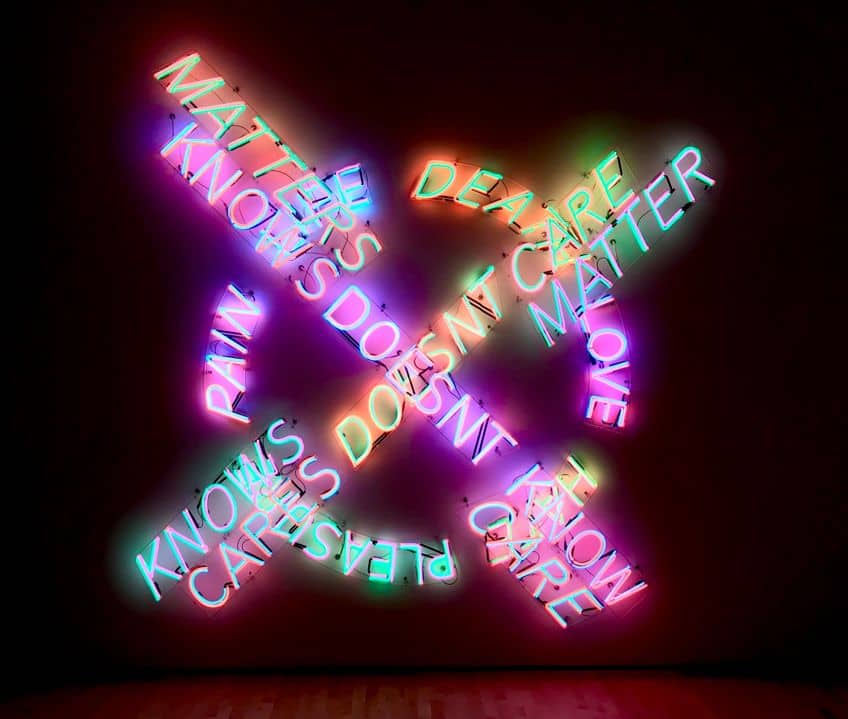
Performance Art and Body
In his performance art, Nauman utilizes his own body to explore a range of activities and processes. His performances often reflect on the physicality of the human form, the limitations and capabilities of the body, and the relationship between the artist and the cultural environment.
He conceptualizes the body not just as a subject but also as an object within the artwork, engaging with issues such as identity, motion, and the human condition.
Notable Works and Exhibitions
Bruce Nauman’s pioneering oeuvre encompasses a variety of media, and his works are regularly featured in major art institutions around the world. His installations and performances, which often challenge perceptions and provoke thought, have been the centerpiece of many significant exhibitions.
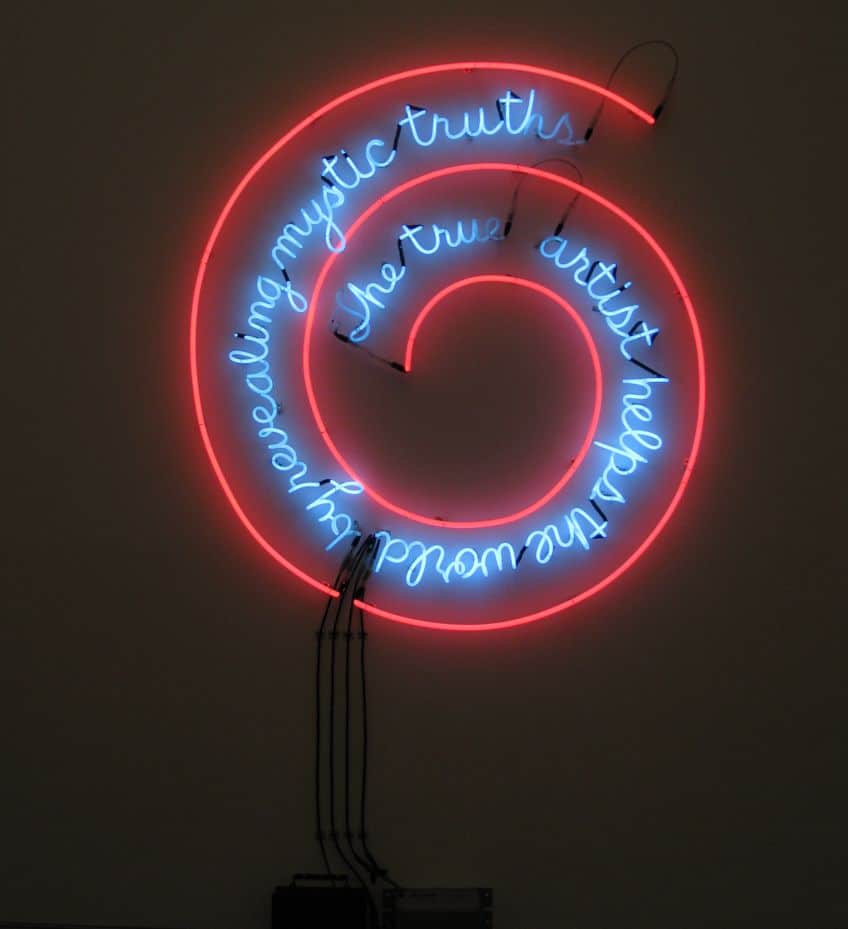
Major Installations
- One Hundred Live and Die (1984): This neon work showcases phrases combining the words “live” and “die” with various actions and emotions, displayed in radiant, bold colors that flicker and illuminate, underscoring the cycle of life and death.
- Clown Torture (1987): A disturbing video installation where repetitive, cacophonous scenes of clowns engaging in nonsensical activities confront the viewer with themes of repetition and psychological endurance.
- Mapping the Studio I (Fat Chance John Cage) (2001): An extensive video installation tracking nocturnal happenings in Nauman’s studio, hinting at the elusive nature of the creative process.
Exhibited at prestigious venues like the Museum of Modern Art and the Philadelphia Museum of Art, these installations not only reflect his mastery of different mediums but also his impact on contemporary art.
Acclaimed Performances
- The True Artist Helps the World by Revealing Mystic Truths (1967): A seminal neon sculpture that served as a formative piece in Nauman’s exploration of the artist’s role.
- Learned Helplessness in Rats (Rock and Roll Drummer) (1988): Merging performance, video, and sculpture, this work reflects on the condition of helplessness induced by uncontrollable situations.
Nauman’s performances have been instrumental in redefining what art can be, as evident from his significant contributions to important exhibitions such as the Venice Biennale and presentations at institutions like the Walker Art Center and Tate Modern.
Influence and Legacy
Bruce Nauman has continually impacted the American and international art scene with his inventive approach to art-making and his influential body of work. His legacy is marked by the use of diverse media and the exploration of themes that have shaped contemporary art practices.
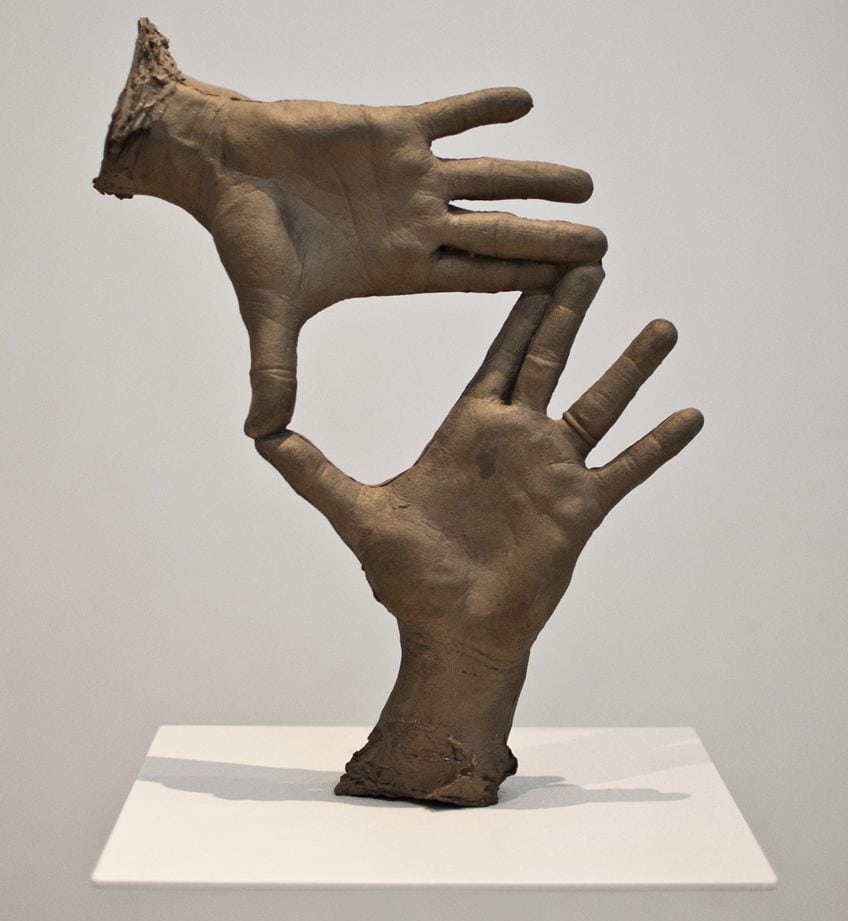
Awards and Recognitions
Bruce Nauman’s contributions have been honored with numerous awards and recognitions. He has received prestigious accolades, including the Golden Lion at the Venice Biennale in 2009, the Wolf Foundation Prize in Arts in 1993, and the Wexner Prize in 1994, among others. Key institutions, such as the Museum of Modern Art (MoMA) in New York and the Lannan Foundation in New Mexico, have recognized his innovative work. Not only have his installations, films, and sculptures influenced fellow artists and the broader domain of art, but also his engagement with galleries like Leo Castelli and Nicholas Wilder has marked significant shifts in how art is exhibited and sold.
His birthplace, Fort Wayne, Indiana, and his long-time home near Galisteo, New Mexico, often serve as stages for his artistic explorations, grounding his expansive influence in specific American locales.
Furthermore, Nauman’s impact is witnessed through his induction into art history courses and texts as a seminal figure. Solo exhibitions dedicated to his work, such as those held in prominent London galleries, underscore his status as an influential artist on a global scale. His piece, Carousel exemplifies his ability to transform the ordinary into conceptually rich experiences, further solidifying his position in the art world.
Bruce Nauman Today
Bruce Nauman remains a vital figure in contemporary art, with a career that has innovatively bridged various mediums. He continues to influence younger generations of artists through his diverse body of work, which includes sculpture, photography, neon, video, drawing, printmaking, and performance.
Despite his extensive influence, comprehensive exhibitions of his works were scarce for several decades. However, recent years have seen a resurgence of interest, as evidenced by retrospective exhibitions celebrating his legacy. For instance, not too long ago, a retrospective co-organized by Kathy, a lead curator, highlighted the lasting relevance of Nauman’s work. This might indicate growing recognition of Nauman’s contributions to the art world.
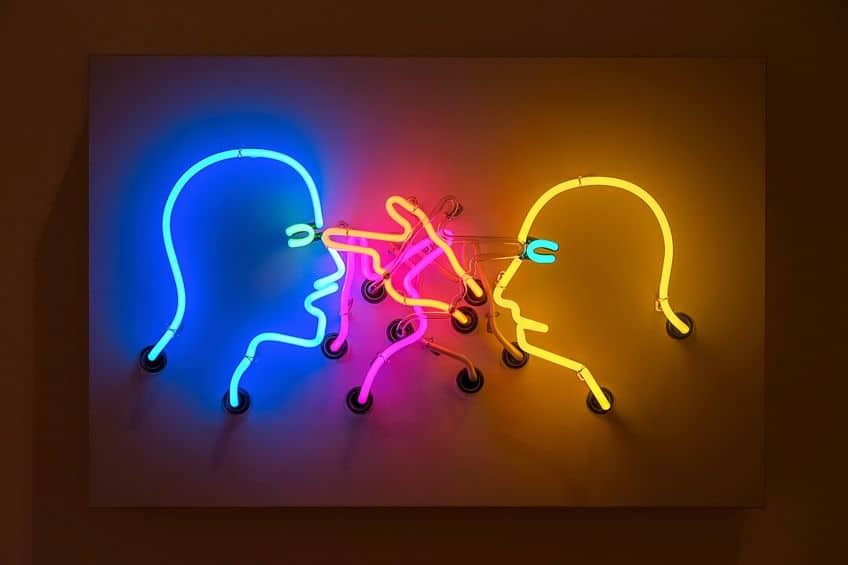
Even at the age of over 80, Nauman continues to create thought-provoking work, such as a 4K 120fps 3D projection titled Self-Portrait at 80. This black-and-white work with stereo sound is representative of Nauman’s persistent engagement with the exploration of self and artistic boundaries.
He remains based near Santa Fe, New Mexico, a location that speaks to his preference for privacy and introspection. Despite his physical remove from the bustling urban art scenes, Nauman’s continued output ensures that he maintains a significant presence in the contemporary art conversation. The Memorial Art Gallery, for example, showcased “No, No, New Museum,” an iconic video work that reinforces his stature in the realm of video art. With an unwavering dedication to experimentation and a reluctance to settle into a single form, Bruce Nauman exemplifies the restless spirit of innovation that characterizes much of today’s art scene.
Bruce Nauman’s artistic legacy is a testament to the power of innovation and experimentation in contemporary art. Through his groundbreaking use of diverse mediums and his exploration of complex themes, Nauman has pushed the boundaries of artistic expression and challenged viewers to engage with art in new and profound ways. His influence can be seen not only in the realm of conceptual and multimedia art but also in the broader cultural landscape, where his ideas continue to inspire and provoke thought. As we reflect on Nauman’s remarkable career, we recognize his enduring impact on shaping the dialogue and possibilities within the art world, leaving a lasting imprint for generations to come.
Frequently Asked Questions
What Is the Significance of Video Art in Bruce Nauman’s Oeuvre?
Video art plays a pivotal role in Nauman’s body of work, allowing him to investigate themes of surveillance, body movement, and the artist’s studio as a performative space. His innovative use of video art has been crucial in expanding the boundaries of sculpture and performance.
Which Galleries Exhibit Bruce Nauman’s Work?
Bruce Nauman’s work is regularly exhibited in prominent institutions such as The Museum of Modern Art (MoMA) in New York. Additionally, his work has been the subject of retrospectives and is displayed in numerous well-respected galleries worldwide.
What Themes Are Prevalent in Bruce Nauman’s Neon Sculptures?
Nauman’s neon sculptures often delve into themes of language, miscommunication, and the body. He uses neon to juxtapose playful visuals with serious and sometimes disconcerting messages, creating a powerful visual and conceptual impact.
How Has Bruce Nauman’s Background Influenced His Artistic Practice?
Bruce Nauman’s background, encompassing studies in mathematics and physics alongside fine arts, has significantly impacted his artistic practice. It provided him with a unique perspective that informs his exploration of space, language, and the human condition within his work.
Isabella studied at the University of Cape Town in South Africa and graduated with a Bachelor of Arts majoring in English Literature & Language and Psychology. Throughout her undergraduate years, she took Art History as an additional subject and absolutely loved it. Building on from her art history knowledge that began in high school, art has always been a particular area of fascination for her. From learning about artworks previously unknown to her, or sharpening her existing understanding of specific works, the ability to continue learning within this interesting sphere excites her greatly.
Her focal points of interest in art history encompass profiling specific artists and art movements, as it is these areas where she is able to really dig deep into the rich narrative of the art world. Additionally, she particularly enjoys exploring the different artistic styles of the 20th century, as well as the important impact that female artists have had on the development of art history.
Learn more about Isabella Meyer and the Art in Context Team.
Cite this Article
Isabella, Meyer, “Bruce Nauman – A Master in the World of Contemporary Art.” Art in Context. April 26, 2024. URL: https://artincontext.org/bruce-nauman/
Meyer, I. (2024, 26 April). Bruce Nauman – A Master in the World of Contemporary Art. Art in Context. https://artincontext.org/bruce-nauman/
Meyer, Isabella. “Bruce Nauman – A Master in the World of Contemporary Art.” Art in Context, April 26, 2024. https://artincontext.org/bruce-nauman/.




